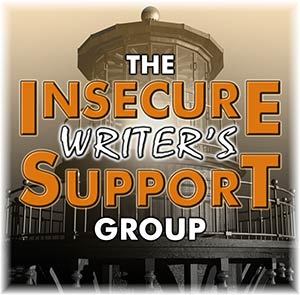Whose story?

It’s the first Wednesday of the month again, time for a post for the Insecure Writer’s Support Group.
~~~~~~~~~~~~~~~~~~~~
SEPTEMBER QUESTION: What genre would be the worst one for you to tackle and why?
MY ANSWER: That is simple. Horror. I don’t read it. I don’t watch it. I don’t like it. Of course, I’d suck at writing it.
~~~~~~~~~~~~~~~~~~~~
I wanted to talk about my latest writing project, about story structure, to be precise. As some of you might already know, I’m a long-time participant in the WEP blog hop. Every two months, we write flash fiction on the theme provided by the WEP admin team. I usually write series – six flash stories a year, all about the same protagonist, but each story using a different WEP theme as an inspiration.
This year, all my stories are set in a fantasy world. My protagonist Altenay is a Finder. She finds things or people with her magic. Her clients hire her to find something or someone for them. And here lies my conundrum.
Usually, most story patterns – from ancient myths to modern science fiction – adhere to the same simplified blueprint. The protagonist’s world is in turmoil, for one reason or another. She needs to bring order back into her world, and for that, she must reach a goal: find a sword, kill a dictator, tame a dragon, etc. But of course, there are obstacles and problems in her way. As she solves her problems and overcomes the obstacles, her actions and her emotional upheavals become the meat of the story. The moment she achieves her goal, the story ends.
In the case of my Finder flash fiction, no problem is her own. Her world is not in turmoil. The problems all belong to her clients. When someone hires her to Find a stolen goat or a lost child or a misplaced book, the gist of the story is focused on the client: why they need that object or person Found? What is at stake for them? Altenay only does it for the money. It is her job. So, each story, each journey of hers in pursuit of what was lost, is actually not about her at all but about her clients. Altenay, the Finder, is tangential to their stories, a tool, so to speak. Her travails and emotions are unimportant in the grand scheme of things.
I find this revelation disturbing. I didn’t plan it. I wanted my Altenay to be a real protagonist. I wanted the stories to rotate around her, but the entire series came out differently. Maybe if the stories were longer, I could’ve come up with some problems Altenay had to solve for herself, found some connections between her and the objects she seeks, some stakes of her own. But the very brevity of the stories forced me to concentrate on their most important aspects: why those objects must be Found. And those are all her clients’ stories.
After giving it some thought, I decided that I’m not alone in using this particular format. It is often used in mystery novels: a sleuth is a tool too – a tool of justice. Agatha Christie’s Poirot rarely knows the murder victims, when he investigates the murders, so the stories that unfold are more about the murderer and his victim than about Poirot himself.
I suppose my Finder is a sleuth too, of a sort, even though I didn’t set out to write her that way. What about you? Has anything like that ever happened to you: the story formula you had conceived disintegrated during the writing process, and another one emerged unexpectedly?



